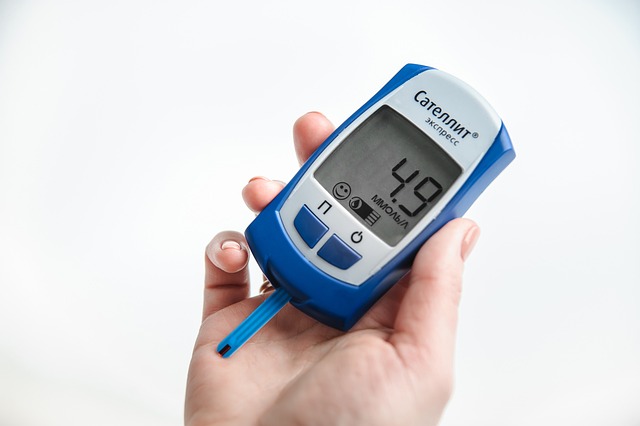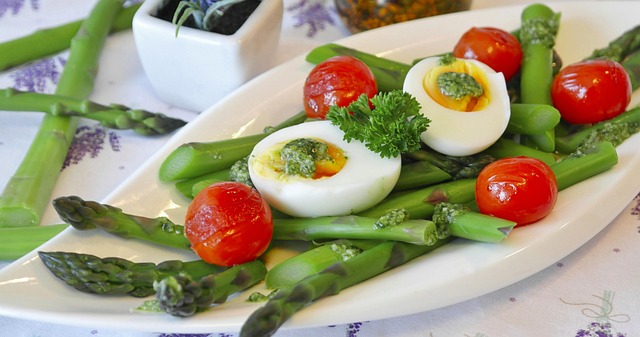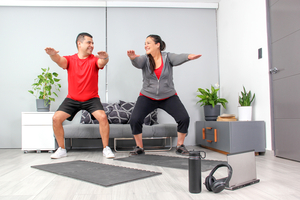Fiber is an important nutrient that has a long list of important health benefits. Without enough of it, we can actually put our health at risk.
Most people believe that they are getting enough fiber in their diets, but it is estimated that only 5% actually meet the recommended daily amounts.[1] On average, Americans only eat about 10 to 16 g of fiber per day, while they should be eating about double that![2,3]
Unfortunately, there is a lot of confusion about what foods actually contain fiber and how to get enough of it, which just adds to the problem.[1]
Let's explore what fiber really is, why it is so important for your health, and how to get plenty of fiber into your daily diet.
What is fiber?
Fiber is an edible material found in all plant foods, like vegetables, fruits, grains, nuts, seeds, and legumes. It is a particular type of carbohydrate that cannot be digested or broken down by the human digestive tract and thus moves through our system remaining relatively intact. Sometimes fiber is referred to as "roughage" or "bulk."[2,3,4]
The fact that fiber isn't digested by our bodies may make it seem like it isn't very valuable, but that just isn't the case. While fiber takes its journey through our digestive tract, it plays many different important roles and provides us with many different health benefits.
Why is fiber important?
Fiber is probably most well-known for helping to relieve constipation, but that's just a small part of what fiber does in the body.
Here is a sampling of some of the important health benefits of fiber:
- Relieving constipation
- Helping the body get rid of waste
- Promoting healthy and regular bowel movements
- Satisfying your appetite and keeping you feeling full
- Helping you lose weight
- Regulating blood sugars and preventing diabetes
- Lowering cholesterol
- Lowering blood pressure
- Reducing the risk of heart disease and stroke
- Reducing the risk of colon cancer [3,4,5]
Ultimately, fiber has a protective effect in the body that helps you steer clear of serious health concerns. This is confirmed by the research; not eating enough fiber is associated with several health risks.[4,6]
Healthy high-fiber foods to eat more of
To take advantage of the health benefits of fiber, you'll want to make sure you eat plenty of fiber-rich foods every single day.
Luckily, high-fiber foods also tend to be healthy foods that are low in calories and packed with powerful plant-based nutrients. Plus, there are many delicious foods to choose from, so you can experiment with these foods to find your favorites.
Here are some common high-fiber foods to try (with grams of fiber per serving) [7]:
- Artichokes – 9.6 g
- Navy beans – 9.6 g
- Green peas – 8.8 g
- Split peas – 8.2 g
- Raspberries – 8 g
- Lentils – 7.8 g
- Pinto beans – 7.7 g
- Blackberries – 7.6 g
- Black beans – 7.5 g
- Canned pumpkin – 7.1 g
- Brussel's sprouts – 6.4 g
- Chickpeas – 6.3 g
- Blueberries – 6.2 g
- Popcorn – 5.8 g
- Winter squash – 5.7 g
- Pear – 5.5 g
- Kiwi – 5.4 g
- Pumpkin seeds – 5.2 g
- Avocado – 5.0 g
- Cauliflower – 4.9 g
- Apple with skin – 4.8 g
- Carrots – 4.8 g
- Coconut – 4.6 g
- Spinach – 4.3 g
- Chia seeds – 4.1 g
- Cooked bulgur – 4.1 g
- Cooked teff – 3.6 g
- Almonds – 3.5 g
- Sunflower seeds – 3.1 g
- Pistachios – 2.9 g
- Whole wheat crackers – 2.9 g
- Whole wheat tortillas – 2.8 g
The key with choosing high-fiber foods is to focus more on whole grains, legumes, vegetables, nuts, seeds, and whole fruits.[5] Just be sure to mix it up so that you can enjoy the wide variety of high-fiber foods that nature has to offer.
How much fiber do you need?
The recommended daily value for dietary fiber is 28 g per day.[4]
The highest fiber food sources have only around 10 g of fiber per serving, so that means you'll have to eat a variety of foods each day that contain fiber to get the recommended amount.[7]
For example, you can get 28 g of fiber in a day by eating a serving of almonds (3.5 g), an avocado (5 g), a handful of pumpkin seeds (5.2 g), a cup of raspberries (8 g), and a serving of chickpeas (6.3 g).[7]
Top tips for adding more fiber to your diet
If you are looking to sneak more fiber into your diet each day, follow these simple tips to increase your intake:
1. Try simple food swaps. Simple swaps allow you to up your fiber intake without having to completely overhaul your whole way of eating. For example:
- Opt for whole-grain oats with raspberries and almonds instead of your usual refined breakfast cereal.
- Try a whole-grain bread made with nuts and seeds for your next sandwich, and be sure to load up with extra veggies.
- Go for a side salad instead of a side of bread or potatoes with dinner. Choose spinach or kale for the base and sprinkle on tasty toppings like sunflower seeds, chopped walnuts, and your favorite veggies.
- Choose brown rice or another whole grain instead of white rice to pair with dinner entrees.
- Snack on freshly cut veggies, nuts, or seeds when you need a boost instead of crackers or chips.
2. Make at least half of your grains whole grains. Limit refined grains as much as possible. Look for whole grains on ingredients lists to make sure you are actually eating a whole-grain product.[4]
3. Choose whole fruits and veggies and keep the peel on. The peels of fruits and veggies contain a lot of fiber, so try to eat the whole, natural version instead of more processed forms.
4. Eat more beans. Beans are an easy way to increase your fiber intake because they are very high in fiber but are also super versatile. Try adding them to salads, mixing them into soups, pureeing them to make hummus, and more.
5. Read nutrition labels. Food labels can tell you how much fiber is in the foods you are eating so you can make sure you meet the daily recommendations. The more you learn about the fiber content in various foods, the better you can make simple choices to eat more fiber-rich foods regularly
6. Take it slow when introducing more fiber. Too much fiber at once can cause digestive disturbances like bloating, cramps, and gas. Not to worry though, your digestive system just needs time to get used to the extra fiber and it will adjust. To help matters, introduce more fiber slowly to reduce any unpleasant side effects.[2,3,5]
7. Don't rely on added fiber from prepared products or fiber supplements. These are made with isolated fibers, which may not have the same health effects as real fiber found in whole foods. These products also don't provide you with vitamins, minerals, and other nutrients. Not to mention things like fiber powders aren't nearly as tasty as fresh, naturally fibrous foods.[5,6]
8. Drink more water as you eat more fiber. The more fiber you eat, the more water you need. Water will work alongside fiber to help remove waste products from the body.[3,6]
Increasing your fiber intake doesn't have to be hard. By making a few simple changes to the way you eat, you can ensure that you are getting the recommended daily amount every single day. Become more aware of what foods are good sources of fiber, choose your favorites, and make sure to keep those foods in your regular meal rotation.
References
- Quagliani D, Felt-Gunderson P. Closing America's Fiber Intake Gap: Communication Strategies From a Food and Fiber Summit. Am J Lifestyle Med. 2016 Jul 7;11(1):80-85.
- MedlinePlus. Fiber. U.S. National Institutes of Health. Reviewed June 28 2018. https://medlineplus.gov/ency/article/002470.htm.
- National Diabetes Prevention Program: Post Core. More Volume, Fewer Calories. Centers for Disease Control and Prevention. https://www.cdc.gov/diabetes/prevention/pdf/posthandout_session6.pdf.
- Dietary Fiber. U.S. Food and Drug Administration. https://www.accessdata.fda.gov/scripts/interactivenutritionfactslabel/dietary-fiber.cfm.
- News in Health. Rough Up Your Diet: Fit More Fiber Into Your Day. National Institutes of Health. https://newsinhealth.nih.gov/special-issues/eating/rough-up-your-diet.
- McManus, KD. Should I be eating more fiber? Harvard Medical School. Updated February 27 2019. https://www.health.harvard.edu/blog/should-i-be-eating-more-fiber-2019022115927.
- Dietary Guidelines for Americans. Food Sources of Dietary Fiber. U.S. Department of Agriculture. https://www.dietaryguidelines.gov/resources/2020-2025-dietary-guidelines-online-materials/food-sources-select-nutrients/food-0.











.webp)






